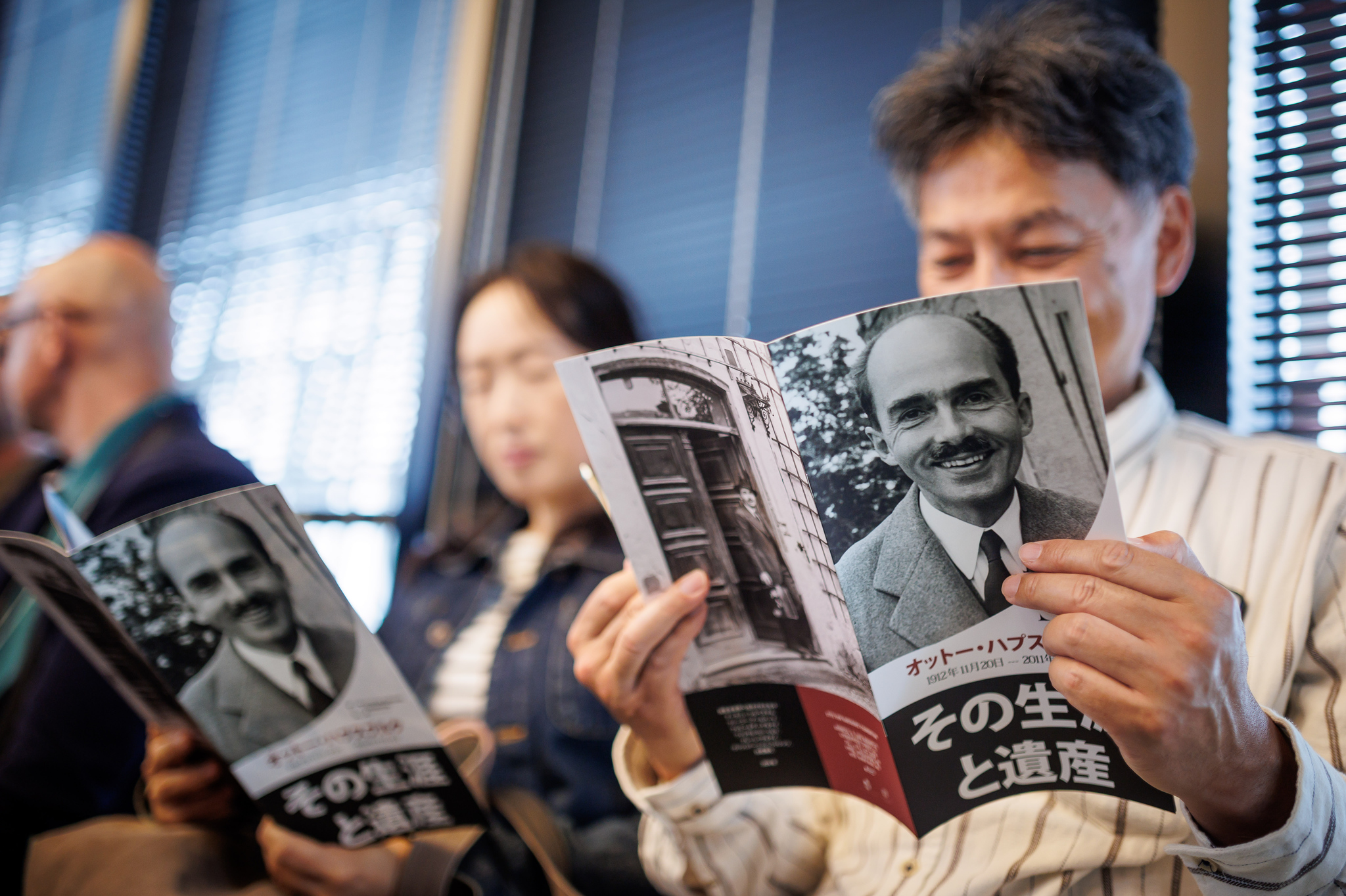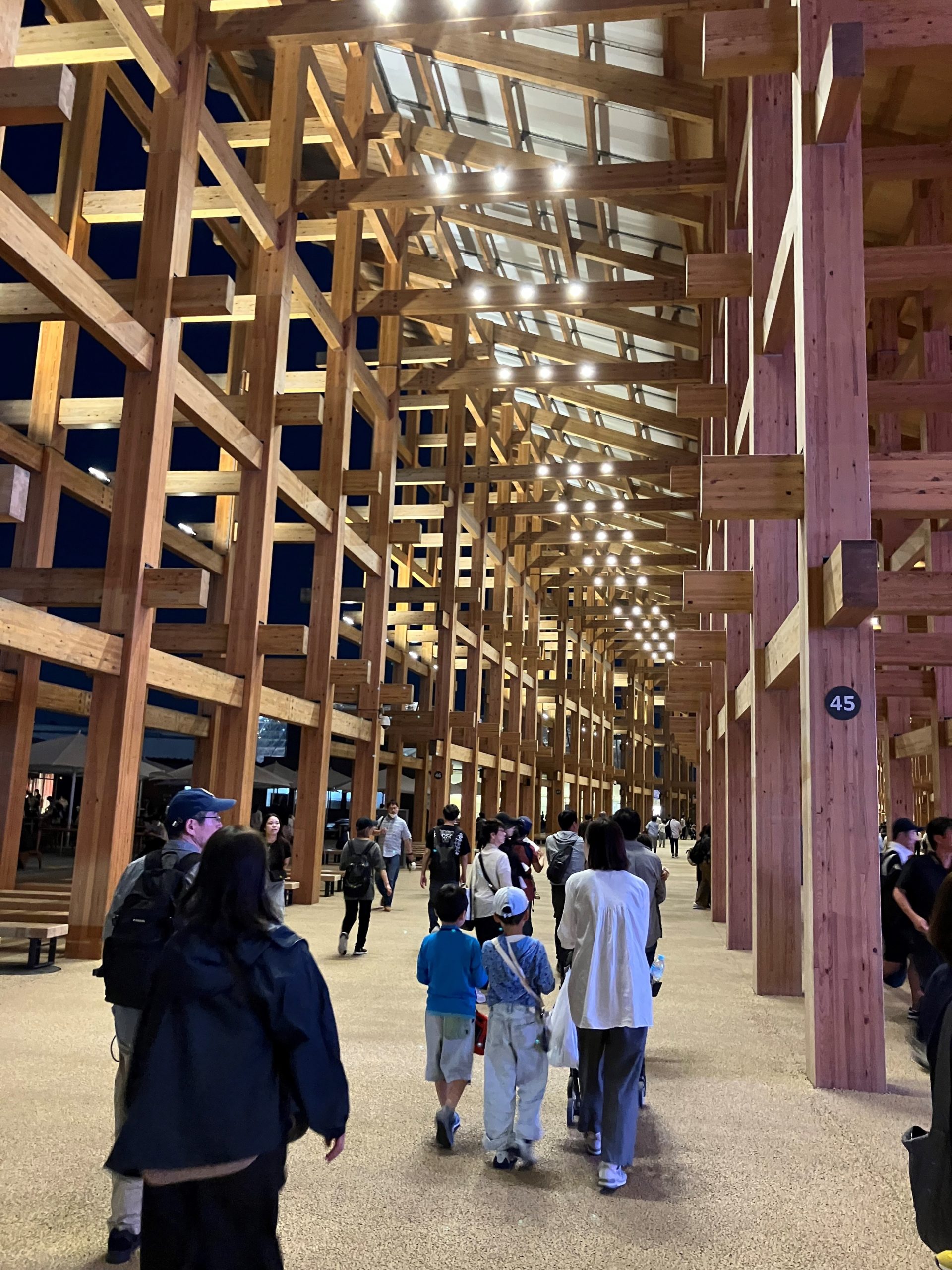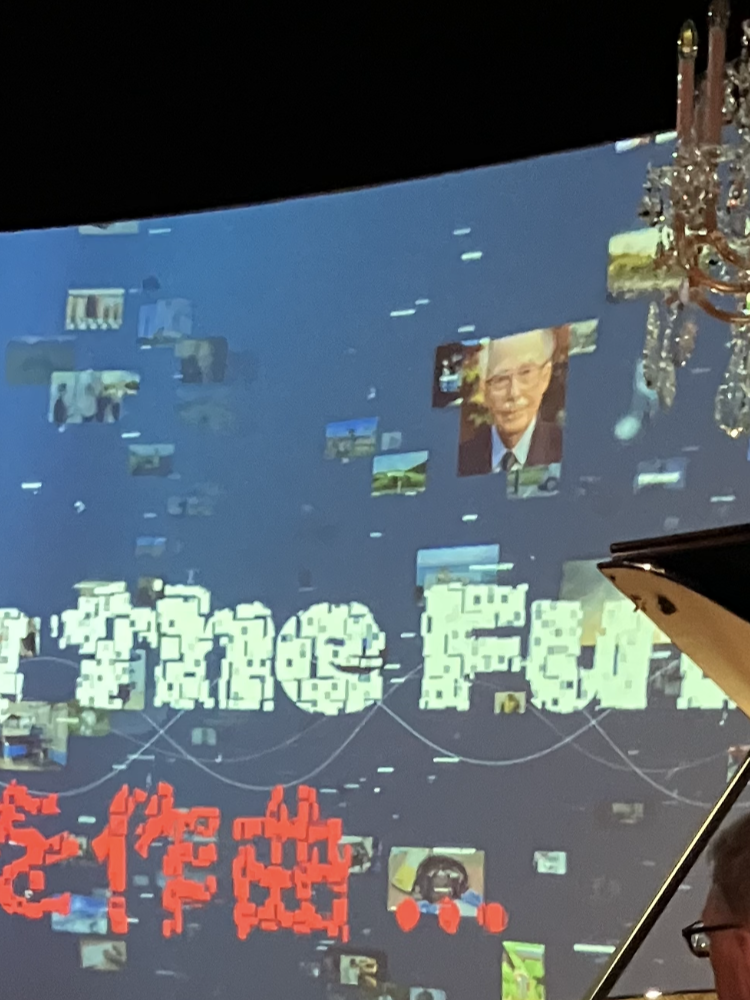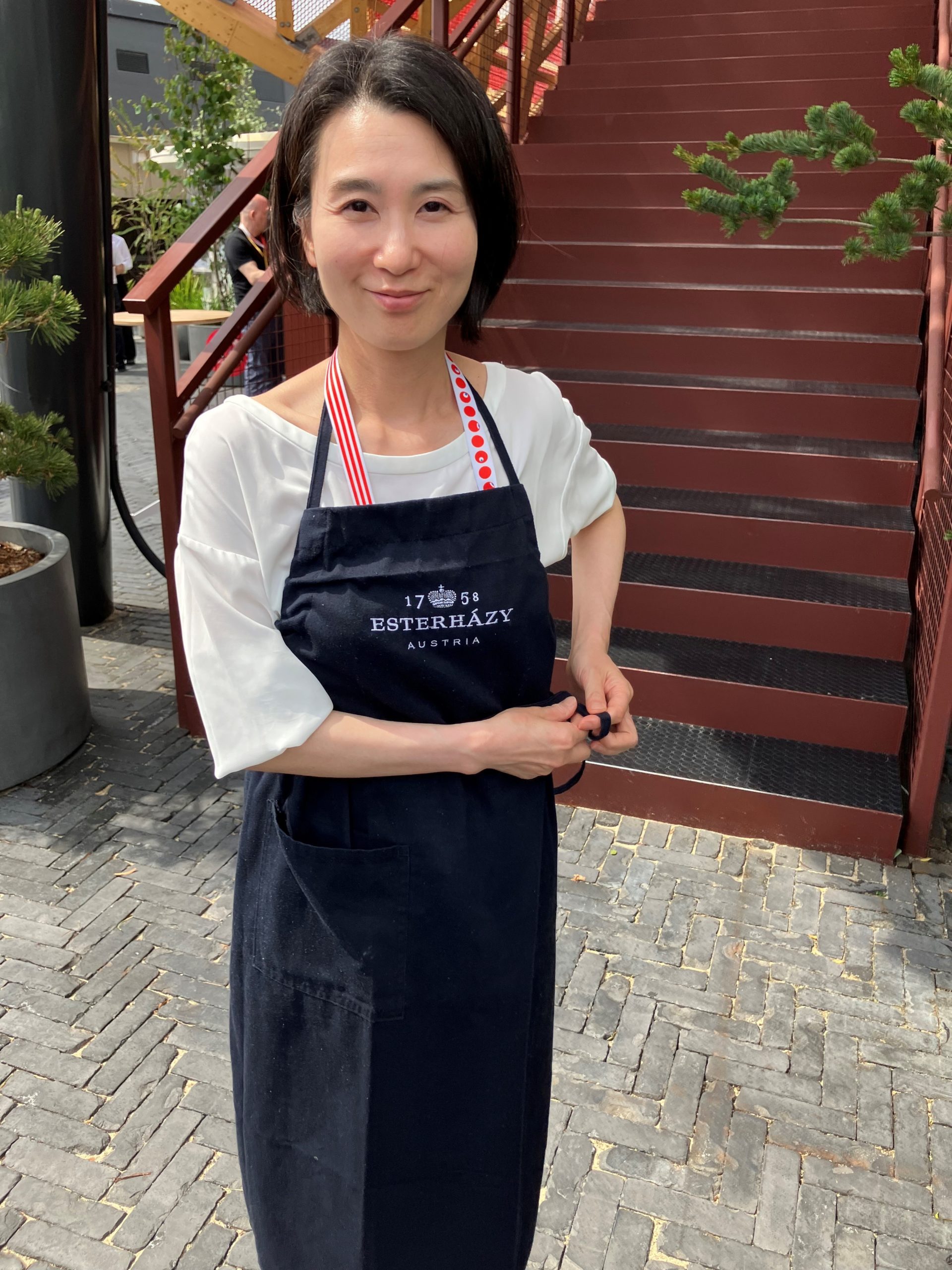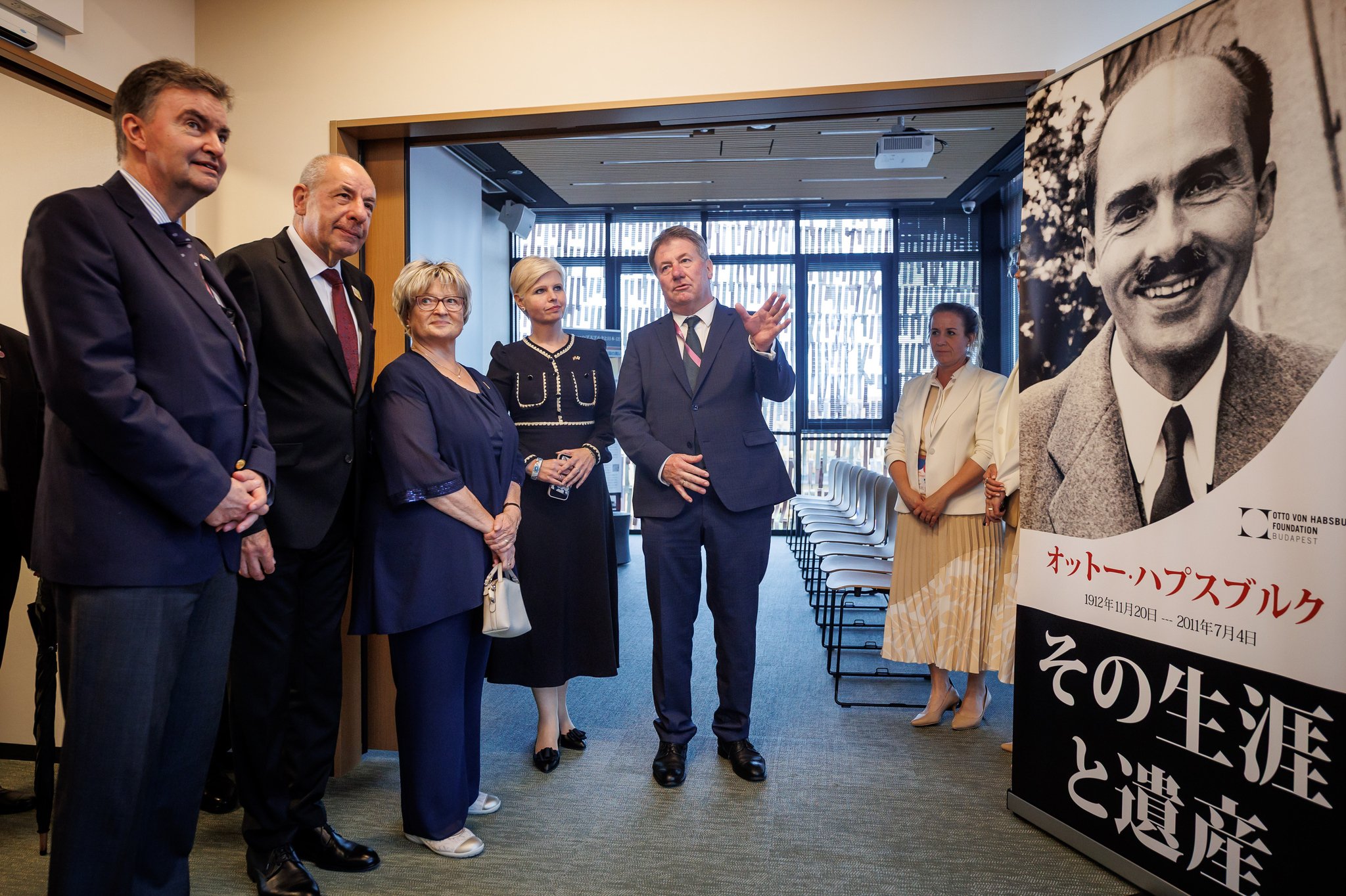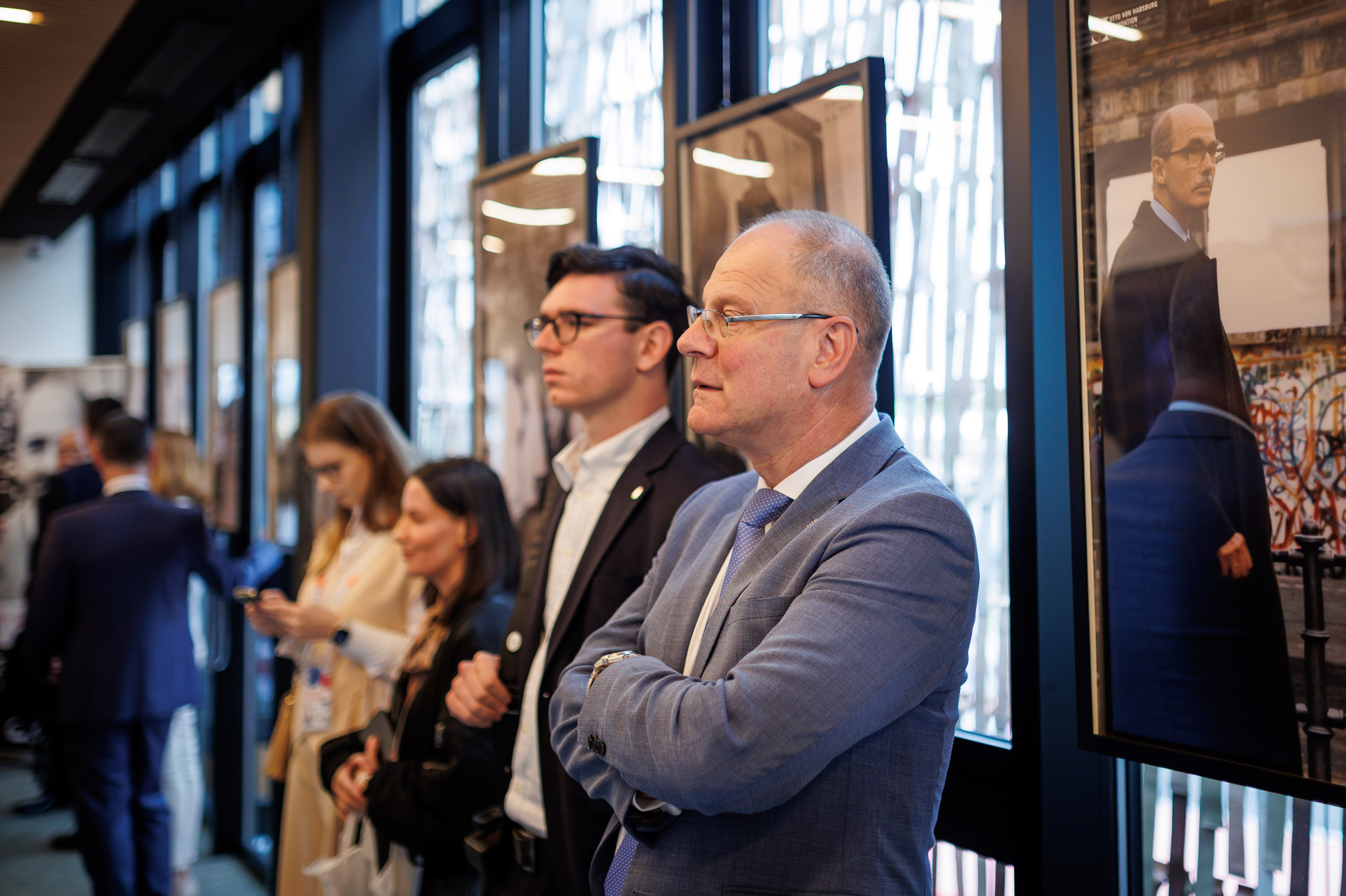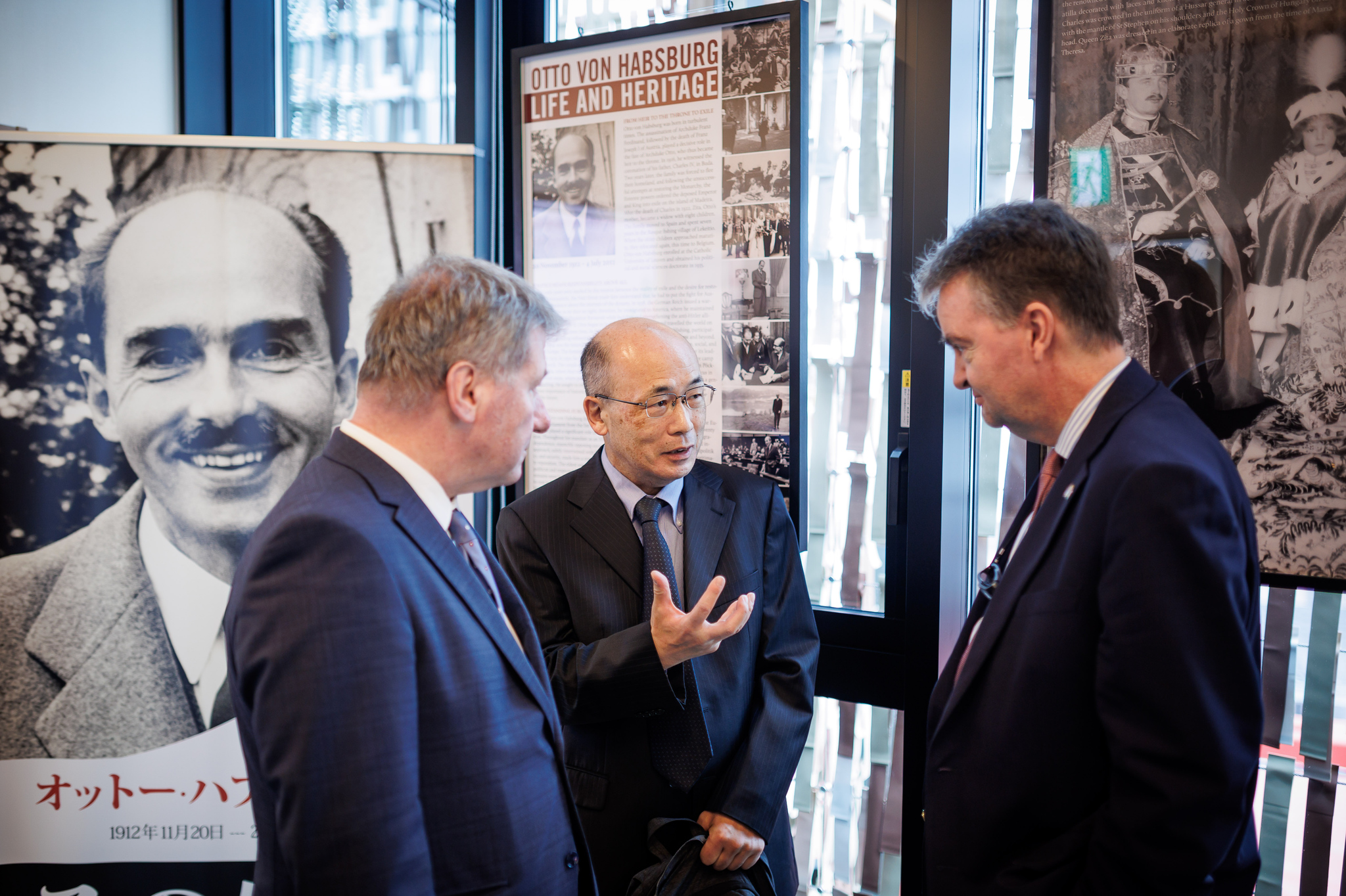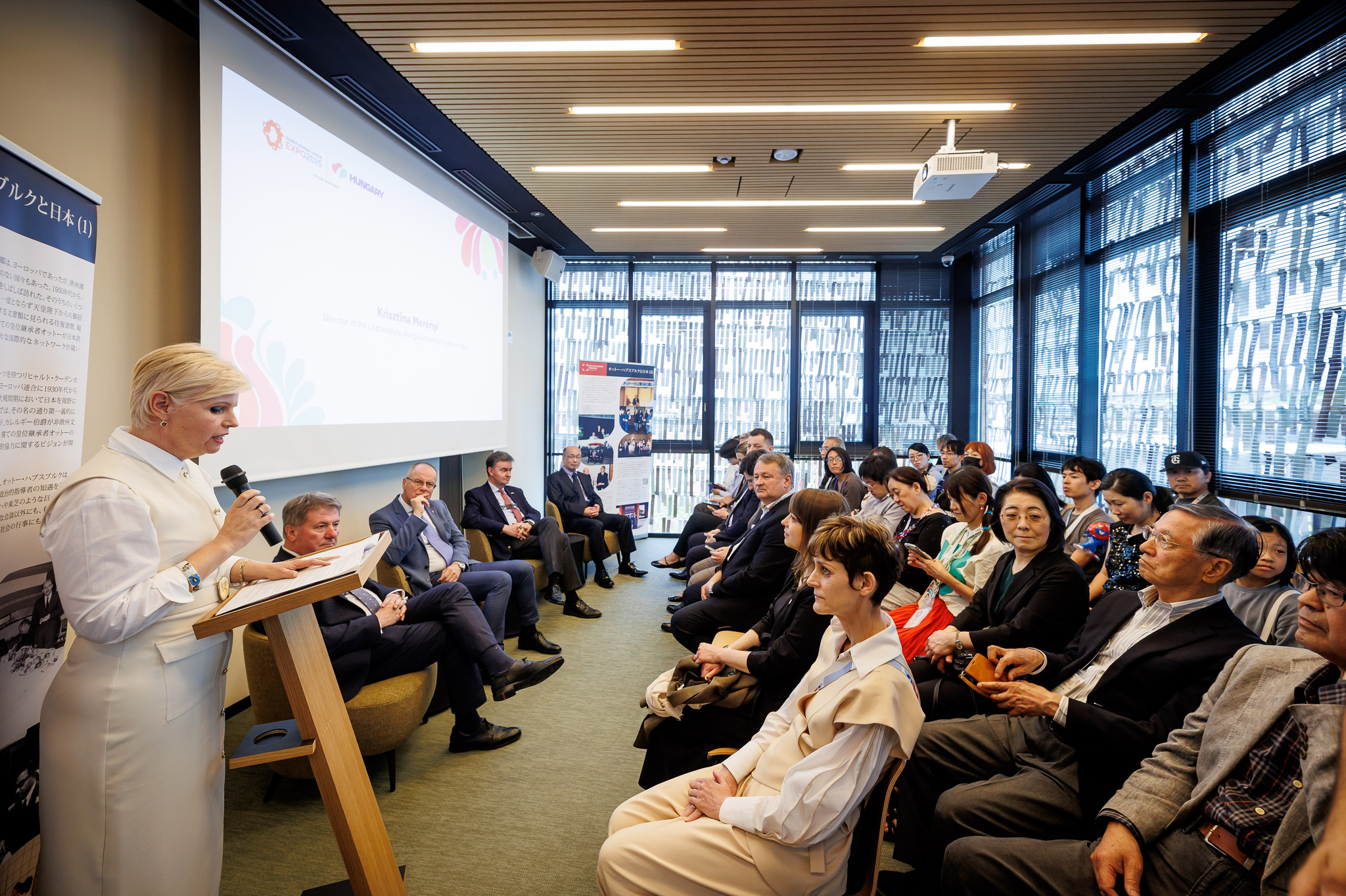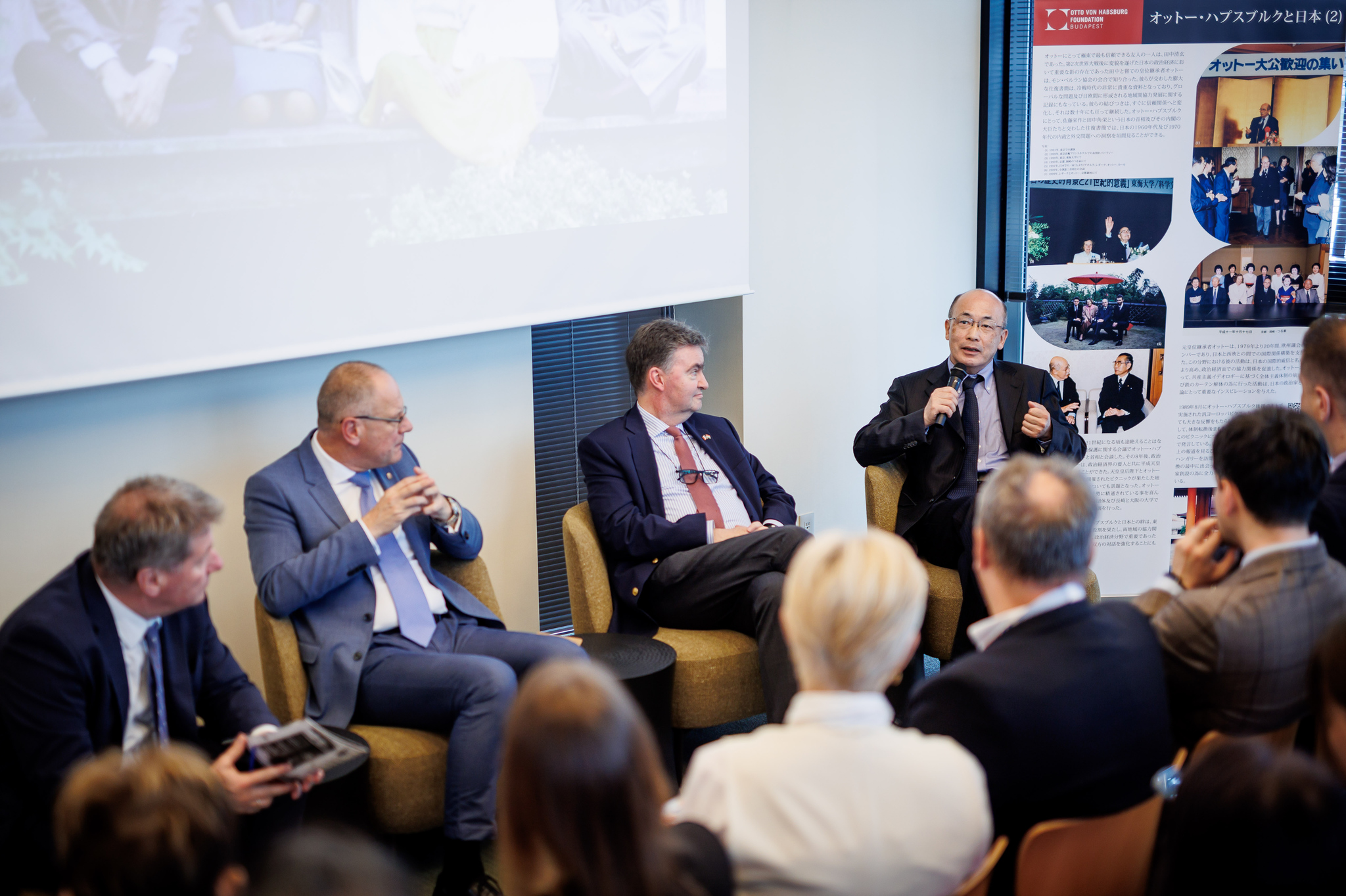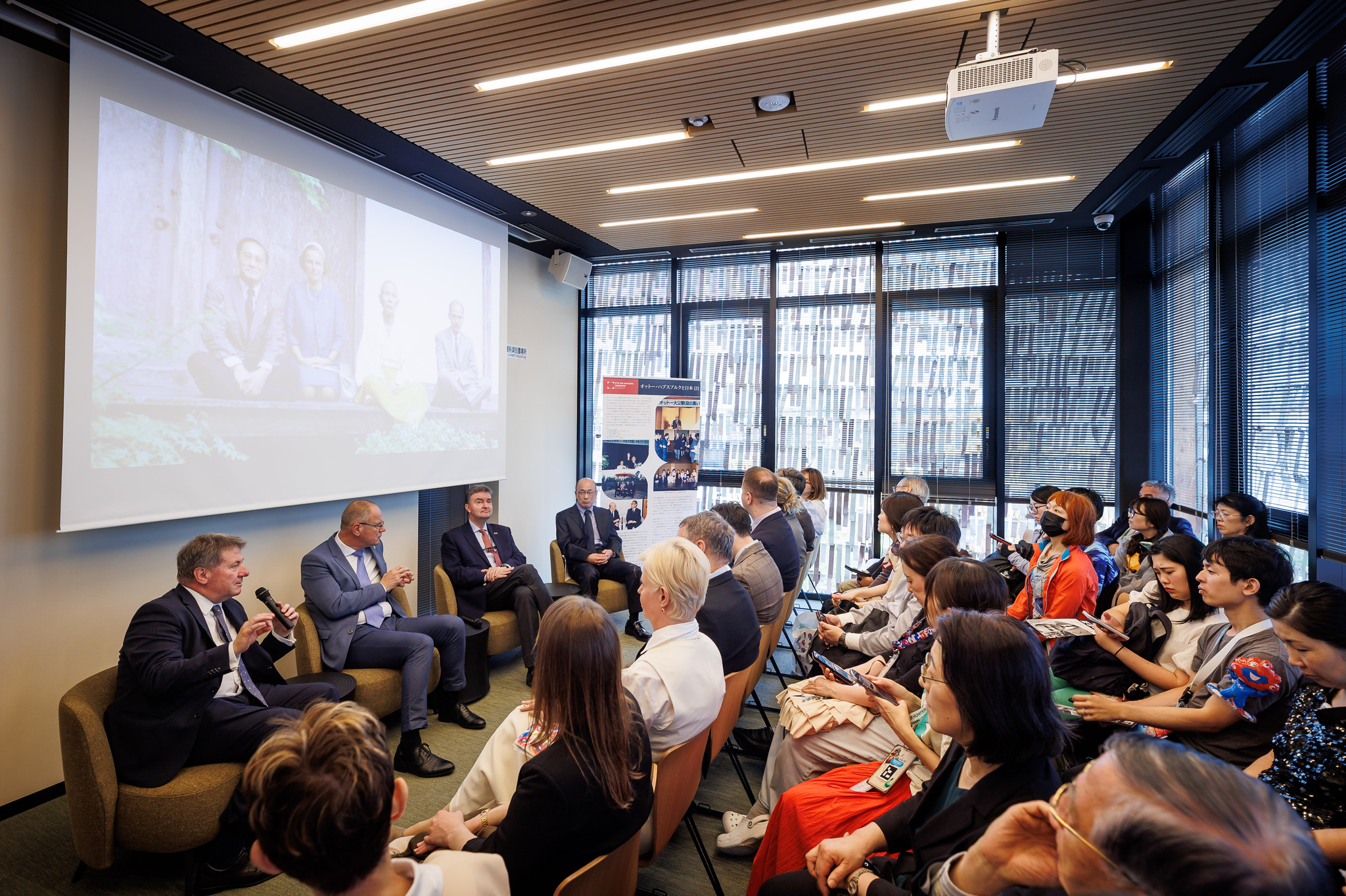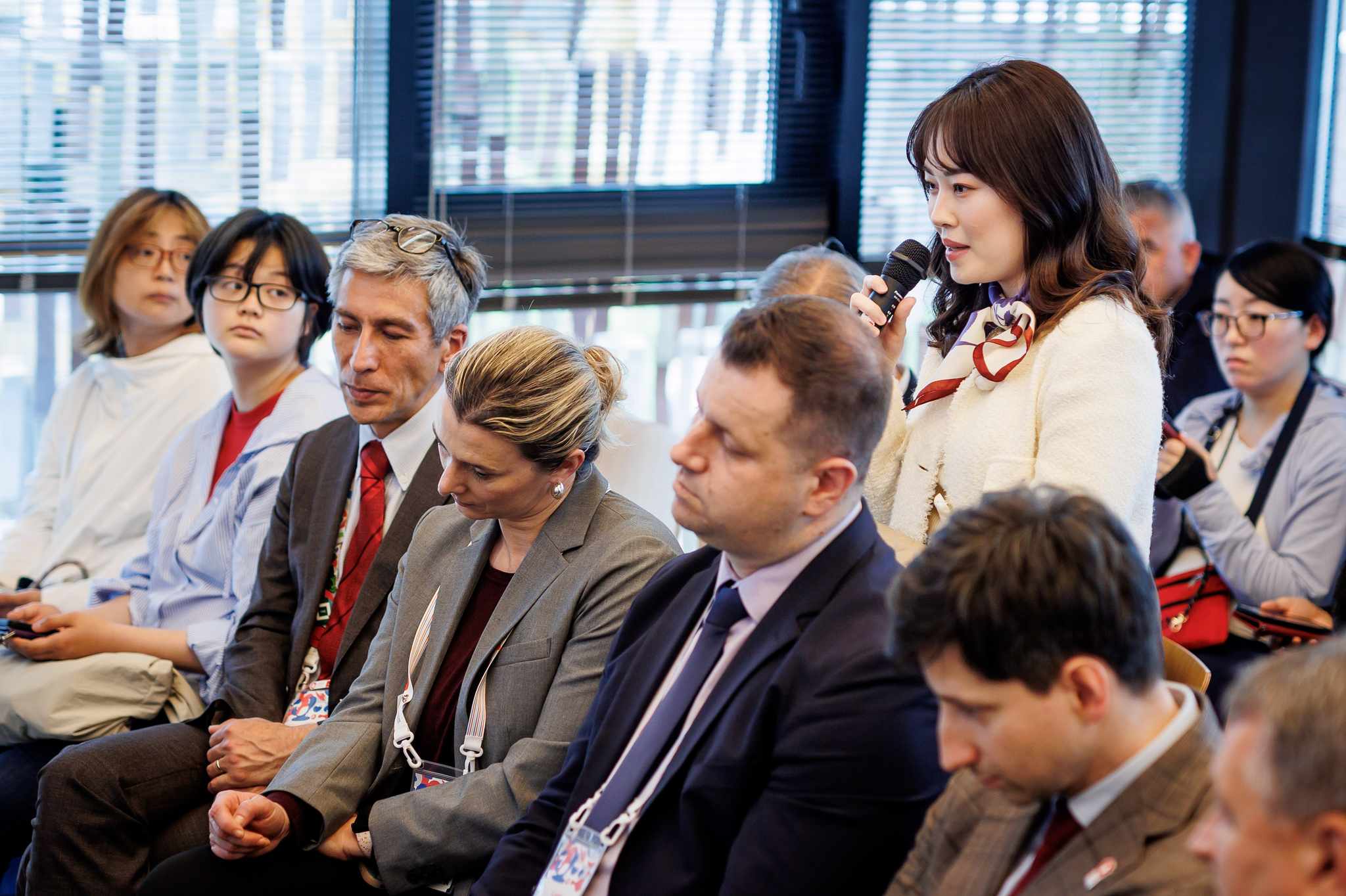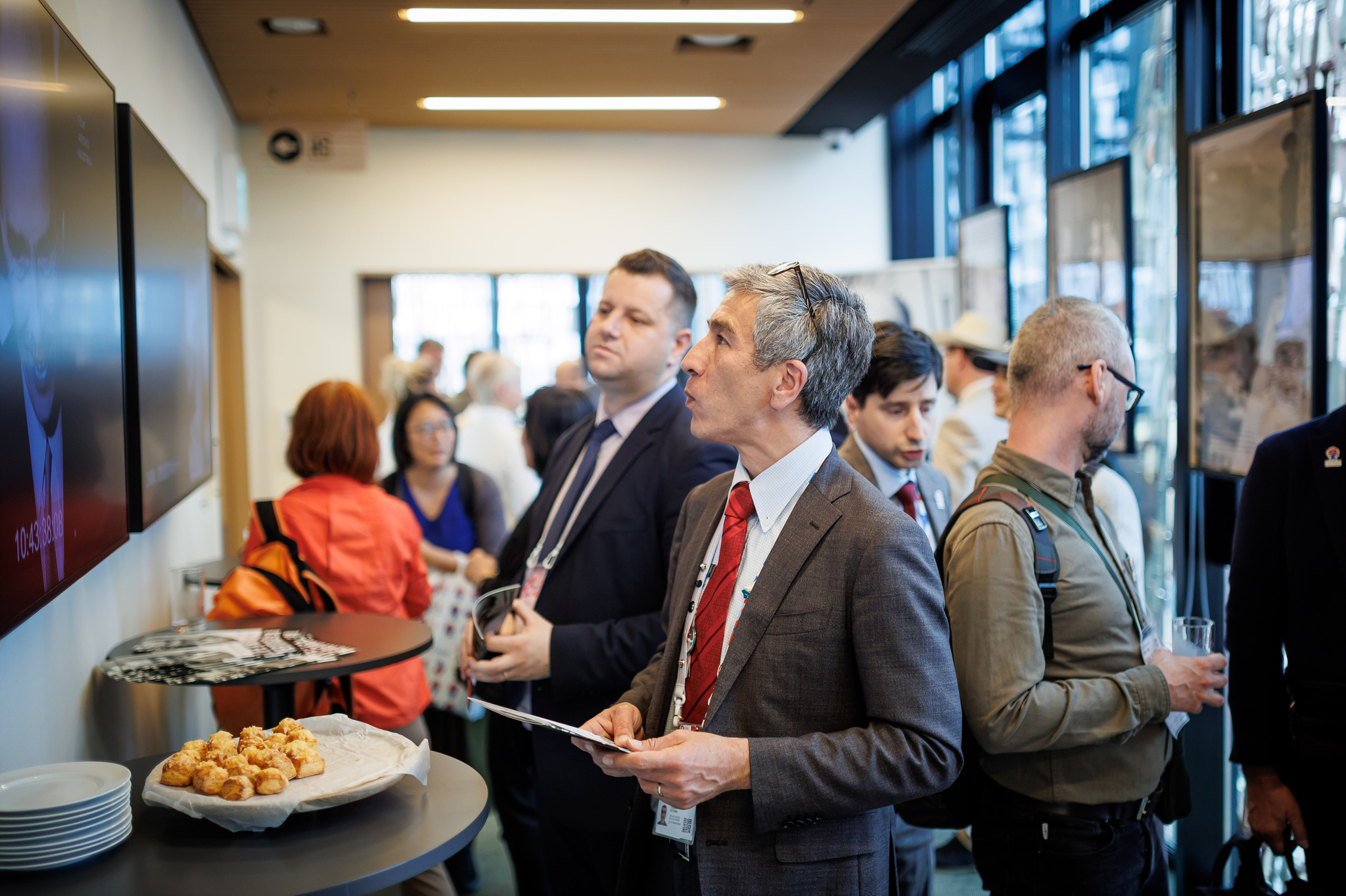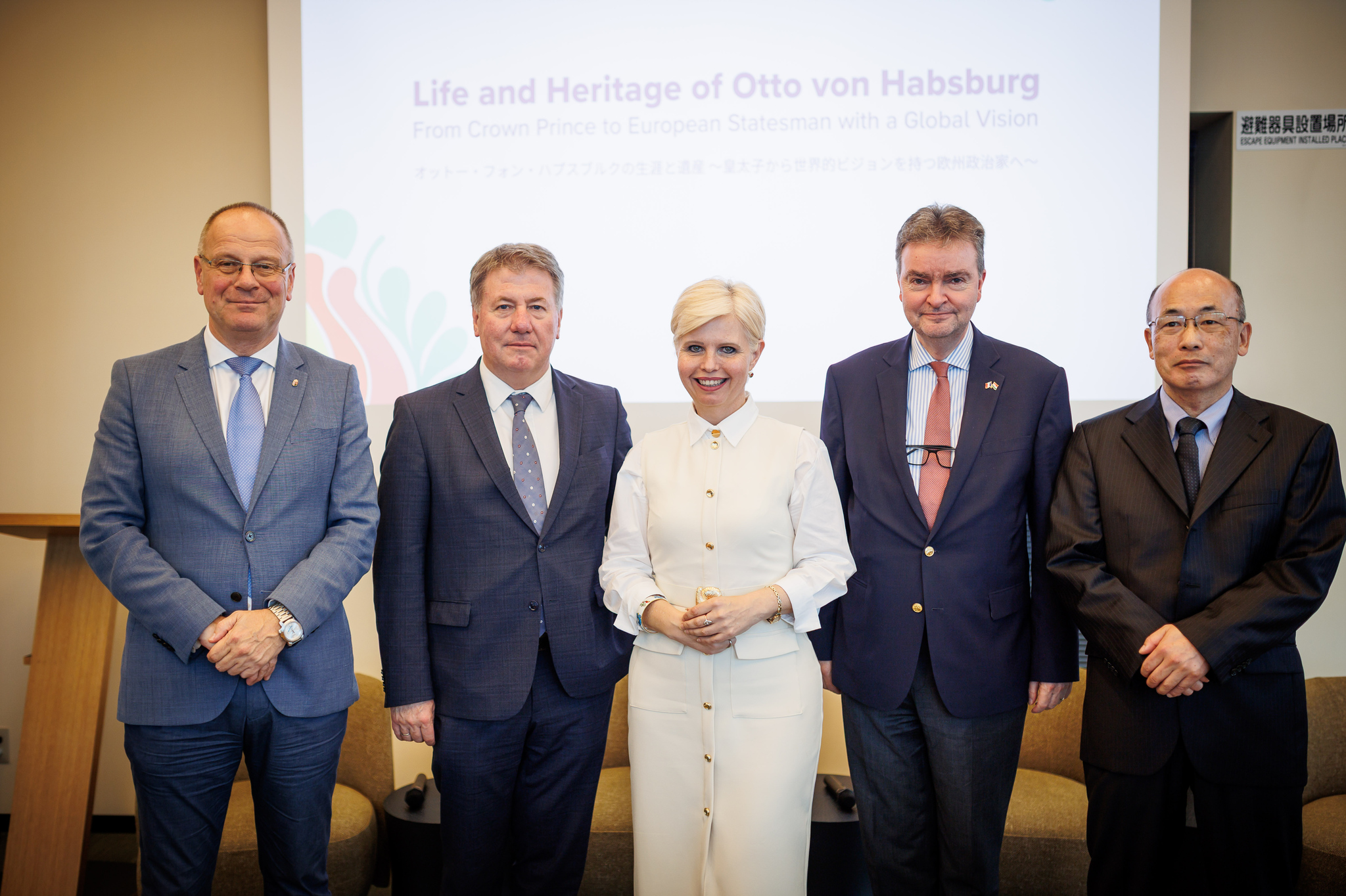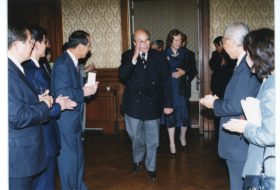The artificial island hosting the Osaka World Expo was once a landfill site, which was transformed into a suitable venue through significant infrastructure development, and also became the terminus of one of the city’s major metro lines. The area is encompassed by a monumental wooden structure reminiscent of traditional Japanese architecture, created by Sou Fujimoto, who also designed the House of Music Hungary in Budapest’s City Park. The structure also serves as a lookout point over the Expo site and the surrounding lagoon.
At the World Expo, 161 countries were represented either by their pavilions or in larger spaces where several smaller stands were available for presentation. The national self-image, therefore, ranged on a vast scale: from gargantuan buildings that were works of art in their own right to modest counters merely distributing brochures, each country’s ambitions and/or budgetary limitations were reflected in this grand parade. The interiors of the buildings varied greatly as well. Japan demonstrated the potential of new technologies for preserving natural values, while China uniquely blended its ancient cultural identity with political messages and a commitment to modernity. The Central European delegations tended to focus on evoking emotions and sensory experiences, which undoubtedly appealed to the Japanese audience, accustomed to living in a technologically overdeveloped world. The Czechs had their pavilion, consisting of a large circular ramp, painted by a contemporary artist, with the ultimate goal of creating a commercial beer garden. Romania displayed beautiful landscapes while treating visitors to a live performance by a string quartet led by a composer who is not widely known – and not by accident. Hungary has succeeded in captivating the eagerly awaiting audience with its live performance of “Tavaszi szél vizet áraszt” (Spring Wind Floods Water) and the Miska restaurant. No factual information detracted from the enjoyment of the show, unless one noticed the Hungarian inventions featured on the staircase walls. Austria skillfully combined stereotypes associated with “Mozart’s alpine homeland” with the achievements of modern technology, evoking nostalgia for the Austro-Hungarian Empire on multiple occasions. The motto “Composing the future” was well complemented by the electronically enhanced Bösendorfer piano, Queen Elisabeth, better known as Sisi, as a timeless icon, the Japanese-born mother of Count Coudenhove-Kalergi, who founded the Pan-European movement, and – a spectacular novelty in the official image of Austria – a brief appearance by Otto von Habsburg. When they served us (Japanese) Kaiserschmarrn in aprons bearing the name “Esterházy,” the sense of Central European solidarity became palpable – even if it was entirely artificial.
We would like to take the opportunity to thank the Hungarian Pavilion for inviting our Foundation and for the fact that, on the Hungarian National Day, which happened to be one day after the Austrian National Day, President Tamás Sulyok and his wife visited our Japanese and English-language exhibition, a shortened version of the material presented in Tokyo in September 2024. As the press reported, the panel discussion held the following day drew substantial interest, and representatives from several Japanese universities indicated that they would welcome an exhibition on the life of Otto von Habsburg and his connections to Japan. During the discussion, Georg von Habsburg shared personal memories of his visits to Japan with his father, while Tibor Navracsics, Minister for Regional Development, praised the European politician’s achievements. Our journalist friend Eiichiro Tokumoto offered a glimpse into the results of his latest research, recalling the historic moment when Otto von Habsburg helped arrange a meeting between Henry Kissinger and the Liberal Democratic Party candidate and future Prime Minister Kakuei Tanaka, thereby enabling the Japanese politician to gain greater international support for his election campaign. The story remains relevant today because Kakuei Tanaka later became the chief political mentor of Shigeru Ishiba, the current Prime Minister of Japan.
For Japanese foreign policy, identifying individuals and channels that can enhance the country’s influence and economic ties abroad is a priority. It is part of the reason why events and information related to our namesake are met with such intense attention there.
The Expo is, consequently, an excellent opportunity for international encounters. In 1970, a World Exhibition was held in Osaka, when modern, democratic Japan presented itself to the global public for the first time after World War II. In 2005, in Nagoya, the island nation positioned itself as a champion of environmental protection, implying that it shared the concerns of Western civilisation. The current Expo’s central theme was the vision of tomorrow’s society, a noble goal, although it is questionable whether it was overambitious given the constraints of the genre. The Hungarian pavilion hosted several programs similar to ours, mostly showcasing modern domestic solutions, technical innovations, contemporary architecture, art, and higher education projects. The feedback revealed that outlining Japan’s historical relations with Europe was beneficial, as it provided context for the current challenges.
We would once again like to thank Krisztina Merényi, Director of the Liszt Institute in Tokyo, as well as Szilvia Horváth and Barbara Török from the Hungarian Pavilion at the Osaka World Expo, for their invaluable assistance. We remain grateful to Eiichiro Tokumoto as well for sharing additional details about Otto von Habsburg’s relationship with Japan and look forward to our continued cooperation.
Photos by: EXPO 2025 Hungary/László Mudra
